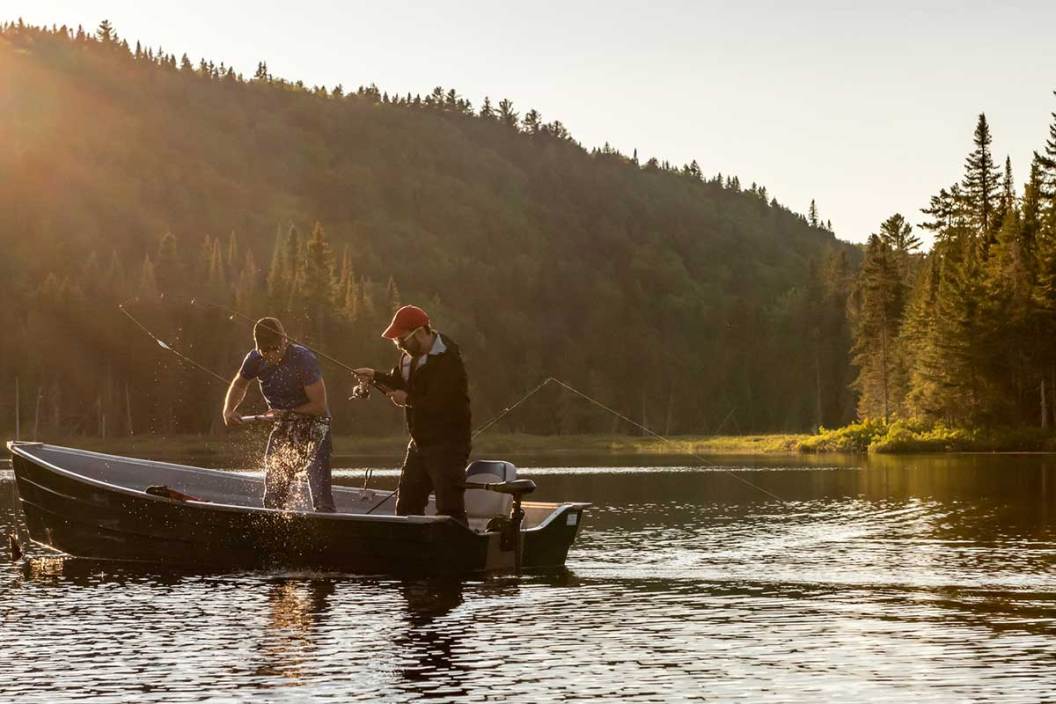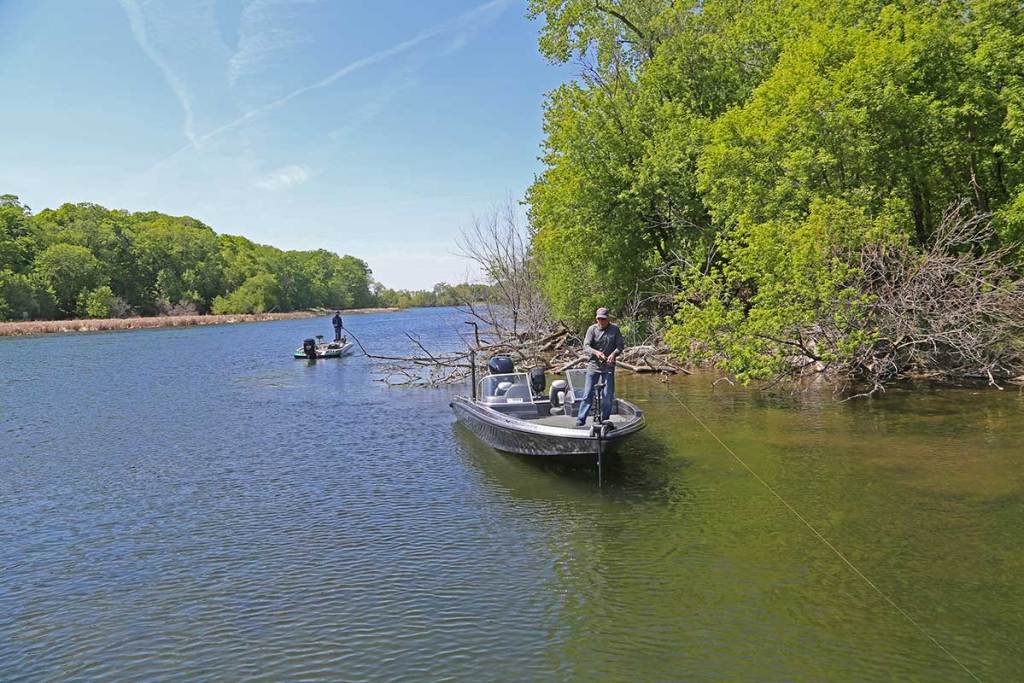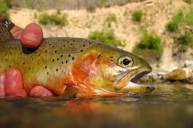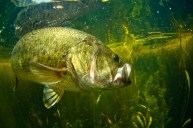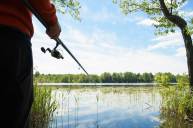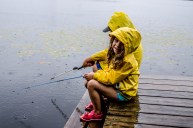Any time an angler see a reasonably-sized freshwater lake, the urge to stop, get out of the car, and fish it is strong. Who knows what may lie beneath the surface, and what may be just asking to be reeled in and caught in these special freshwater ecosystems? But there are portions of a lake's depths that take on certain characteristics as weather warms, and knowing about these lake stratification layers can definitely help your angling efforts.
Once the winter is over and the water begins to seize the energy of the sun during the longer days of spring, these layers begin to form and are defined by things such as temperature and oxygen levels, both of which are of the utmost importance to the fishing community. Different species of fish may be associated with different layers, and they all need to have the proper amount of oxygen to survive.
Particularly larger bodies of water such as the Great Lakes are greatly influenced by these stratification layers, and seasoned fishermen and women have learned how to apply this knowledge to their angling over many years of experience. For the average angler, these layers and the timing of when they matter most may not seem all that important, but digging into this information is a good way to improve upon your fishing and overall outdoor knowledge.
Turnover and Lake Stratification Layers

Orchidpoet via Getty Images
Simply put, stratification layers are the three layers of a body of water based on their depth, temperature, and (most importantly) the dissolved oxygen levels during the course of the year. For the angling community, these layers apply to the warm weather months when we are out on the water the most.
Those familiar with the phrase "lake turnover" know that thermal stratification is a natural part of any lake due to, among other things, changes in the seasons. The waters of a lake mixing in this fashion occurs twice a year - once in the spring, and again in the fall - due in part to changes in the water density.
The three layers most commonly associated with stratification are the Epilimnion, Thermocline (also known as the Metalimnion), and the Hypolimnion. Lake turnover is a notable phenomenon that sees the redistribution of oxygen and nutrient-rich elements of the surface waters to the deeper portions of the lake.
During the fall turnover, the warmer, less dense, more oxygenated water near the surface moves to the lake bottom. This is an extremely important event, especially for lakes that freeze completely over. Remember, a lake that is covered with ice cannot dissolve any atmospheric oxygen.
Alternatively, the spring turnover occurs when rising temperatures on the surface push down the colder, denser water into the depths for the summer. Oxygen and nutrient distribution occurs during both turnover periods, allowing fish to thrive in most parts of the body of water.
Thermal Stratification and Fishing
All this may sound like high school science class, but as sportsmen we always seek to continue our outdoor education. Like any creatures, fish are impacted by their environment and move around accordingly, especially when it comes to the most obvious factor: oxygen.
In the warm weather months, fish are more tuned into temperature because oxygen will readily dissolve into the open water column. Cold water species like trout may be found in some areas at certain times of the day, but will move to deeper, cooler waters as the day heats up.
Largemouth and smallmouth bass will move into the cooler, deeper waters during the heat if the day too, and smallmouth bass do this in notable patterns, allowing for them to be targeted directly. Warm water simply isn't a great place for fish to be, and there will be little to no concentrations of fish in the levels with the highest temperatures.
For the best in summertime fishing (once the heat has set in), it's effective to target the area just above the thermocline where both the temperature and the oxygen levels are optimum for the fish. Below that area there is such low oxygen, and often little to no fish activity.
Electronics are probably the best way to find the different temperatures, and therefore the stratification layers in a lake, with a basic temperature gauge or handheld thermometer coming in second. Of course, you will have to find water that is deep enough for a thermocline to exist, which usually reaches the 20- to 30-foot range and not right near the shoreline.
The thermocline is at its strongest and most predominant during the heat of summer when the surface water is at peak temperature.
Putting It All Together
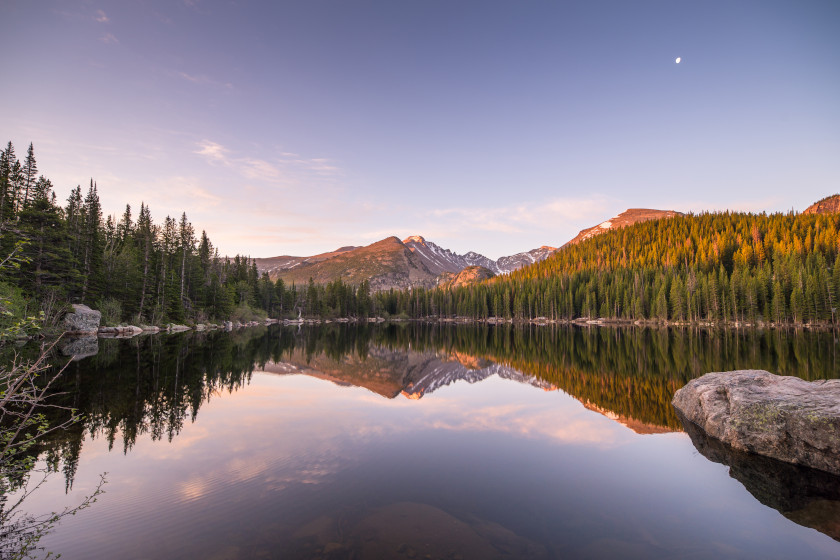
Getty Images: Haizhan Zheng
Finding the thermocline matters the most for anglers trying to fish during the warmer months, but it can have an effect on fishing throughout the year. In the summer months baitfish will congregate around the thermocline and those with a good quality sonar system will benefit from locating not only this break in the water column, but locating baitfish as well.
Many times the points, ledges, and dropoffs work as well as they do because they are located in close proximity to the metalimnion layer. In the larger Great Lakes that don't offer the same structure as other smaller lakes and impoundments, finding the thermocline is even more important, since it can be the one thing that indicates where most of the fish are. Topwater baits don't make sense if the fish are super deep, and a weighted lure that sinks to the bottom doesn't make sense if they are suspended in shallower depths.
If you want to find the forage that the fish are using and the fish that are chasing them, then finding these different layers of water can guide you and your tactics. Ignore them, and you may be casting in a spot that doesn't hold any fish, at least not that time of year.
Please check out my book "The Hunter's Way" from HarperCollins. Be sure to follow my webpage, or on Facebook and YouTube.
